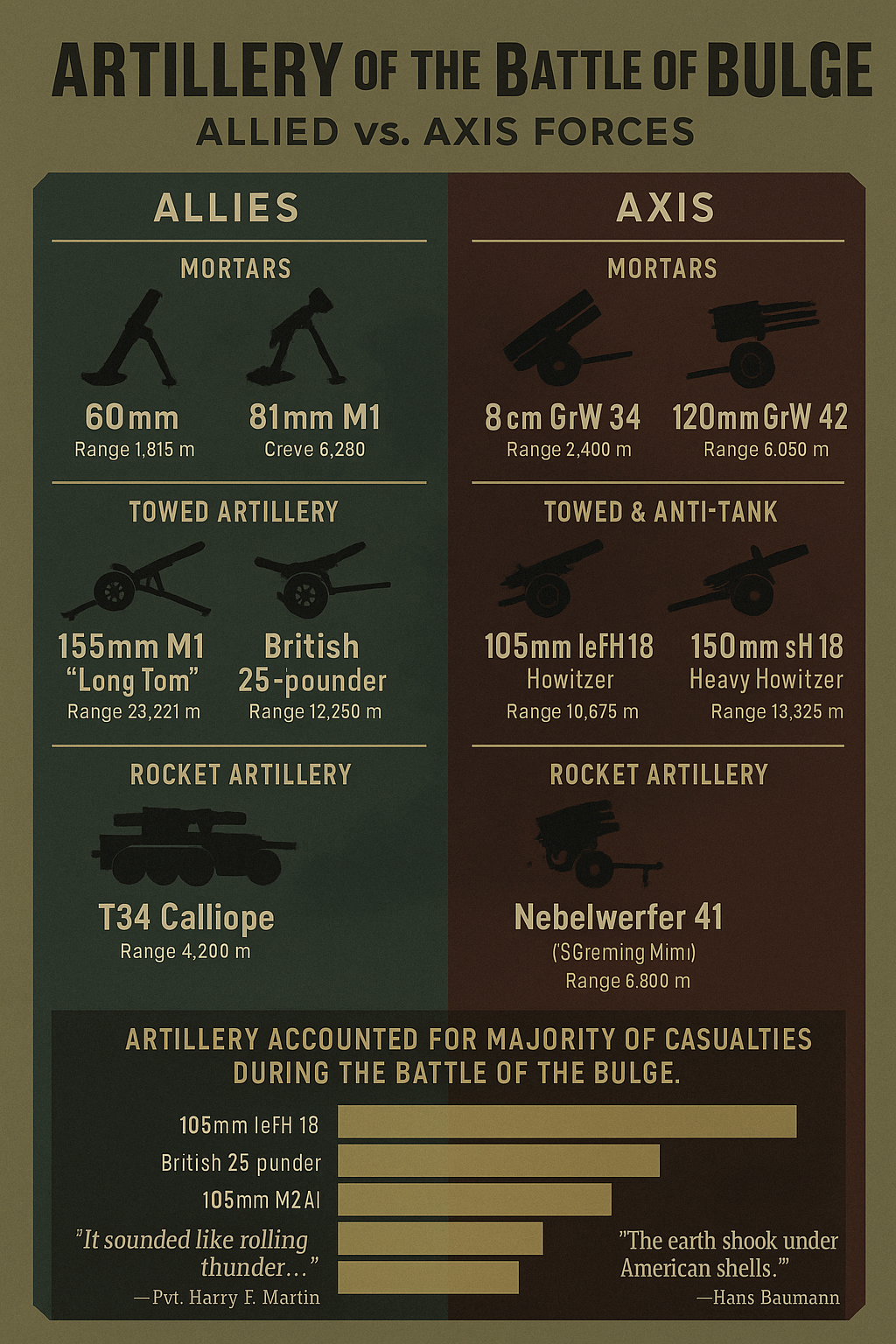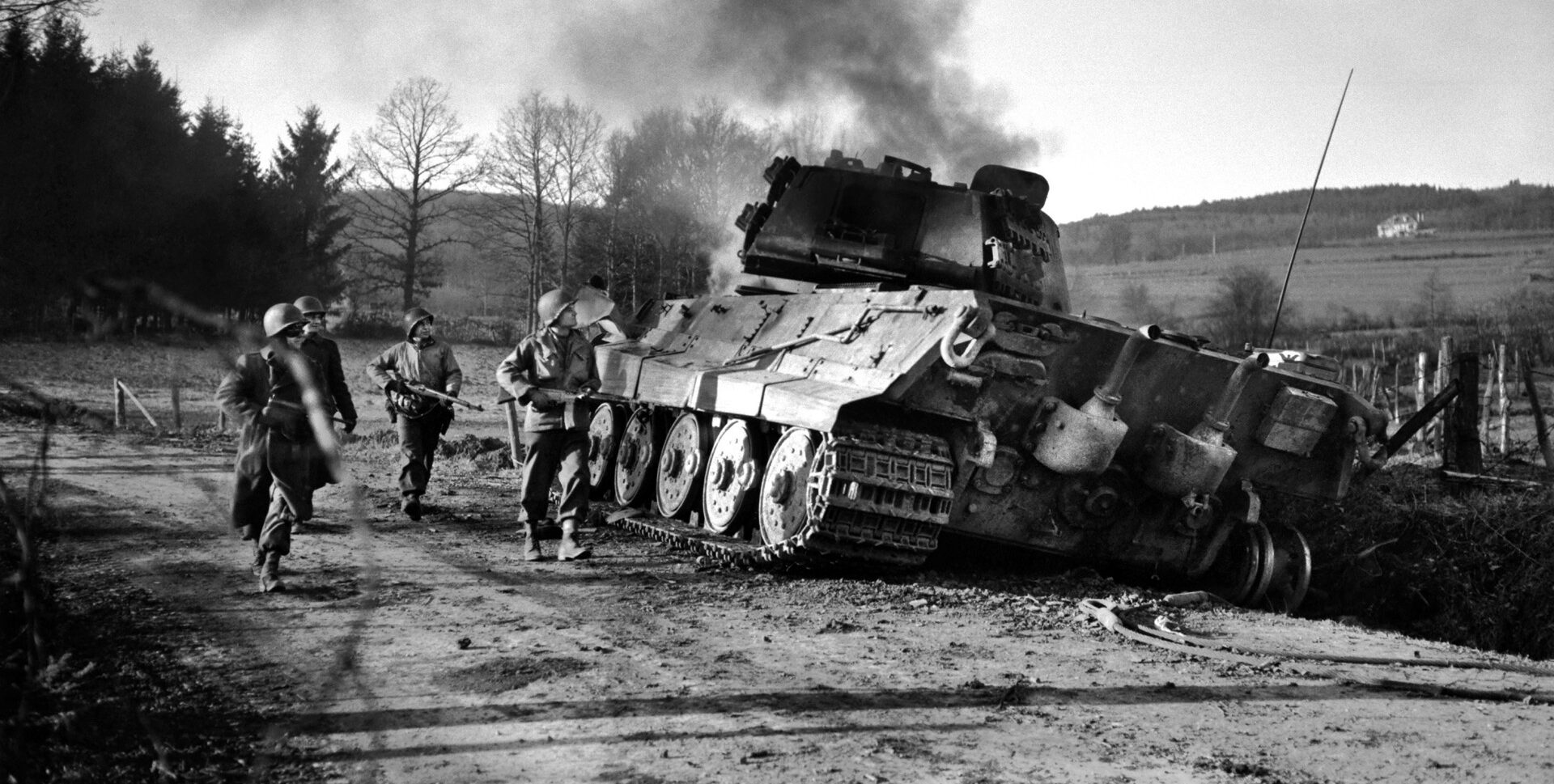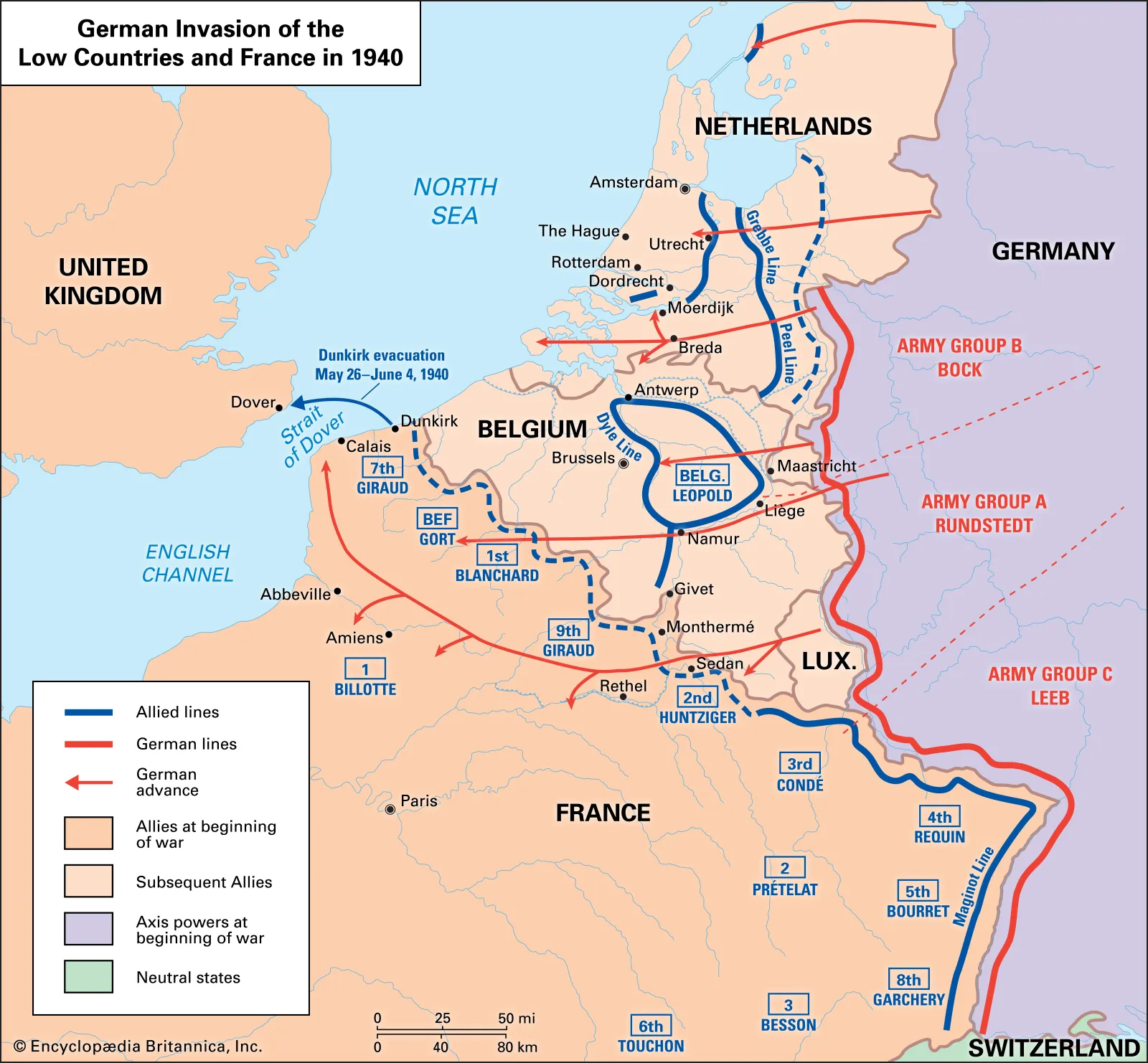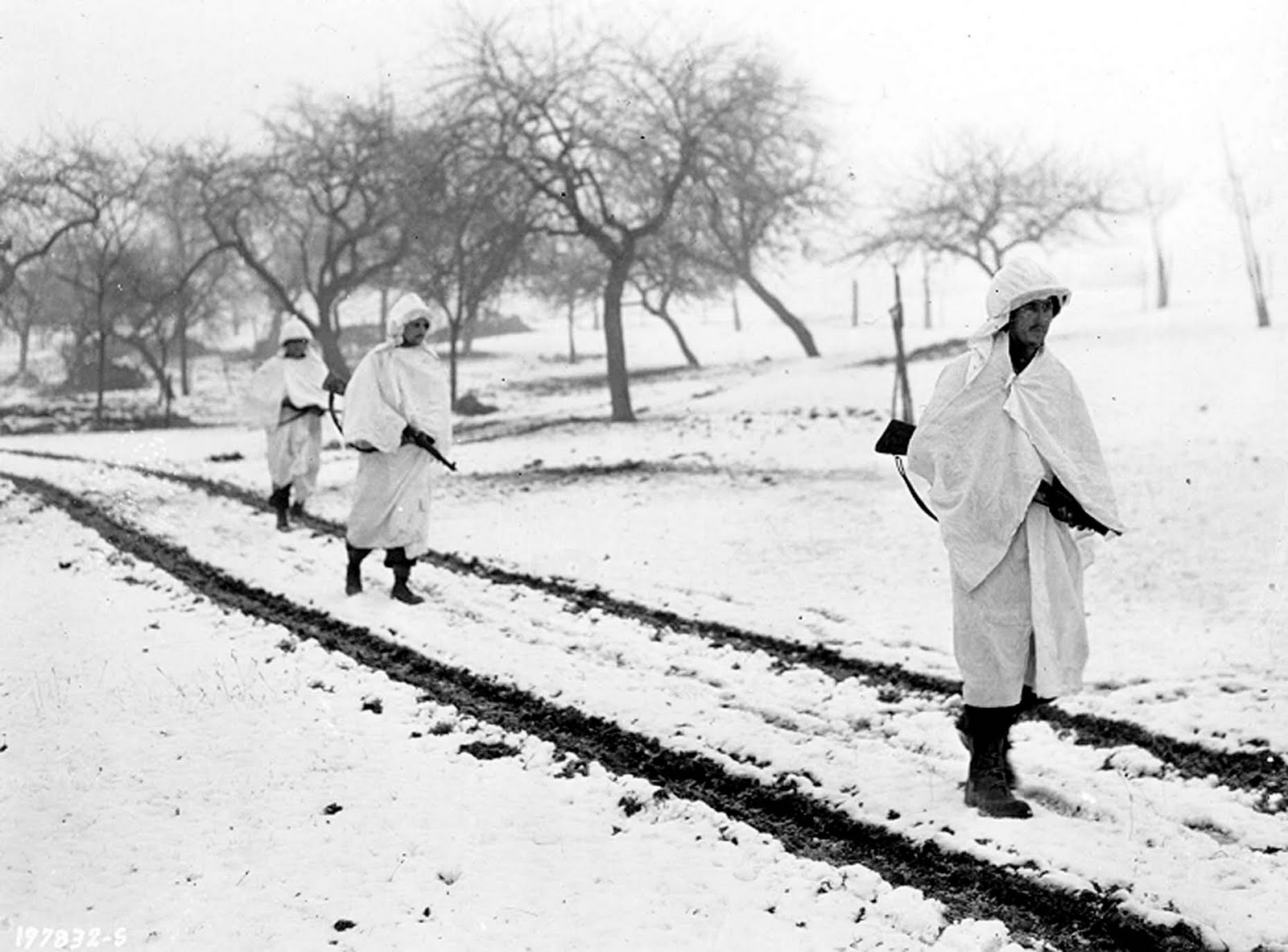Published on May 19, 2025

Artillery was one of the most crucial and deadly elements of combat during the Battle of the Bulge, accounting for the majority of casualties on both sides. From mortars and towed artillery to rocket-propelled systems, the devastating power of artillery shaped the outcome of this pivotal World War II engagement.
Allied Artillery Strength
The Allies fielded an impressive array of artillery, including the reliable American 105mm and 155mm howitzers, the British 25-pounder, and a variety of mortars ranging from 60mm to 120mm. The American artillery, in particular, was known for its rapid response and accuracy, aided significantly by advanced communication systems and aerial reconnaissance. This combination allowed them to effectively neutralize enemy advances and provided critical support to beleaguered infantry.
Axis Artillery Capabilities
The German Wehrmacht relied heavily on their formidable artillery systems like the 88mm anti-aircraft/anti-tank guns, the feared Nebelwerfer rocket launchers, and heavy mortars such as the 120mm Granatwerfer. The Nebelwerfer, often referred to by Allied soldiers as "Screaming Mimi," inflicted psychological as well as physical damage due to its terrifying shriek. German artillery was lethal and precise but often hampered by logistical issues, limited ammunition supplies, and deteriorating morale.
Comparative Analysis
While both sides boasted powerful artillery, the Allies generally had superior artillery capability due to their logistical advantage, superior ammunition supply, and more effective integration with infantry units. American artillery batteries, for instance, could shift fire rapidly, greatly influencing the outcome of battles by disrupting enemy movements and supporting counterattacks.
First-Hand Accounts
Soldiers vividly recounted the overwhelming experience of enduring artillery bombardments. American infantryman Private Harry F. Martin described it as "a continuous rolling thunder, punctuated by sudden, terrifying explosions." Similarly, German soldier Hans Baumann noted, "When the American shells fell, it felt as if the earth itself was shaking apart beneath our feet."
The psychological impact of artillery was profound, with many soldiers citing it as their most feared aspect of battle. The constant threat of sudden death or severe injury from unseen artillery shells was an unending strain on morale and mental health.
Conclusion
Artillery unquestionably dominated the Battle of the Bulge, dictating tactics and causing widespread devastation. The superior logistics and coordinated artillery tactics of the Allies significantly contributed to their eventual victory despite the fierce and effective resistance put up by German artillery units. Understanding this aspect of the battle provides crucial insights into the immense strategic and human cost of artillery warfare in World War II.


